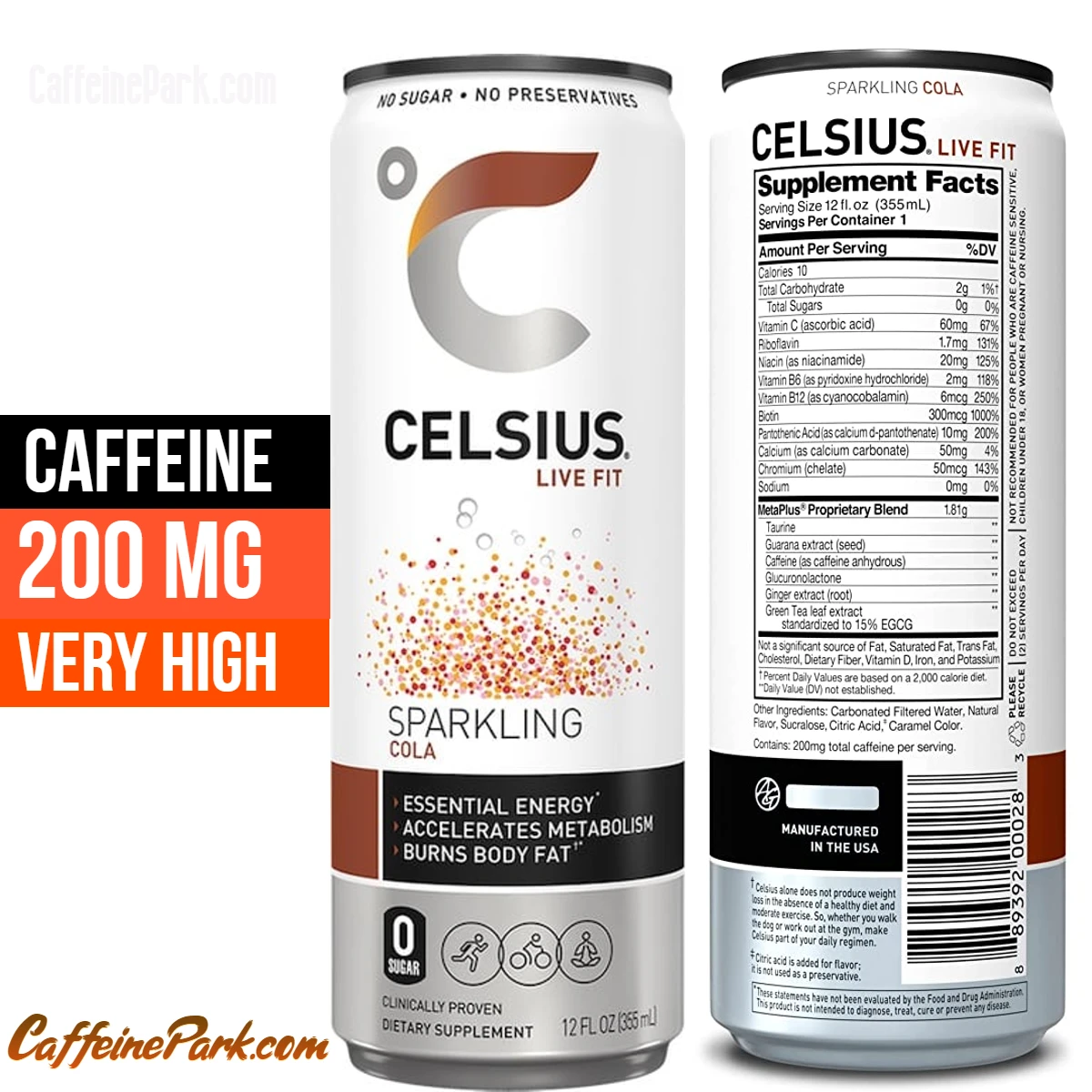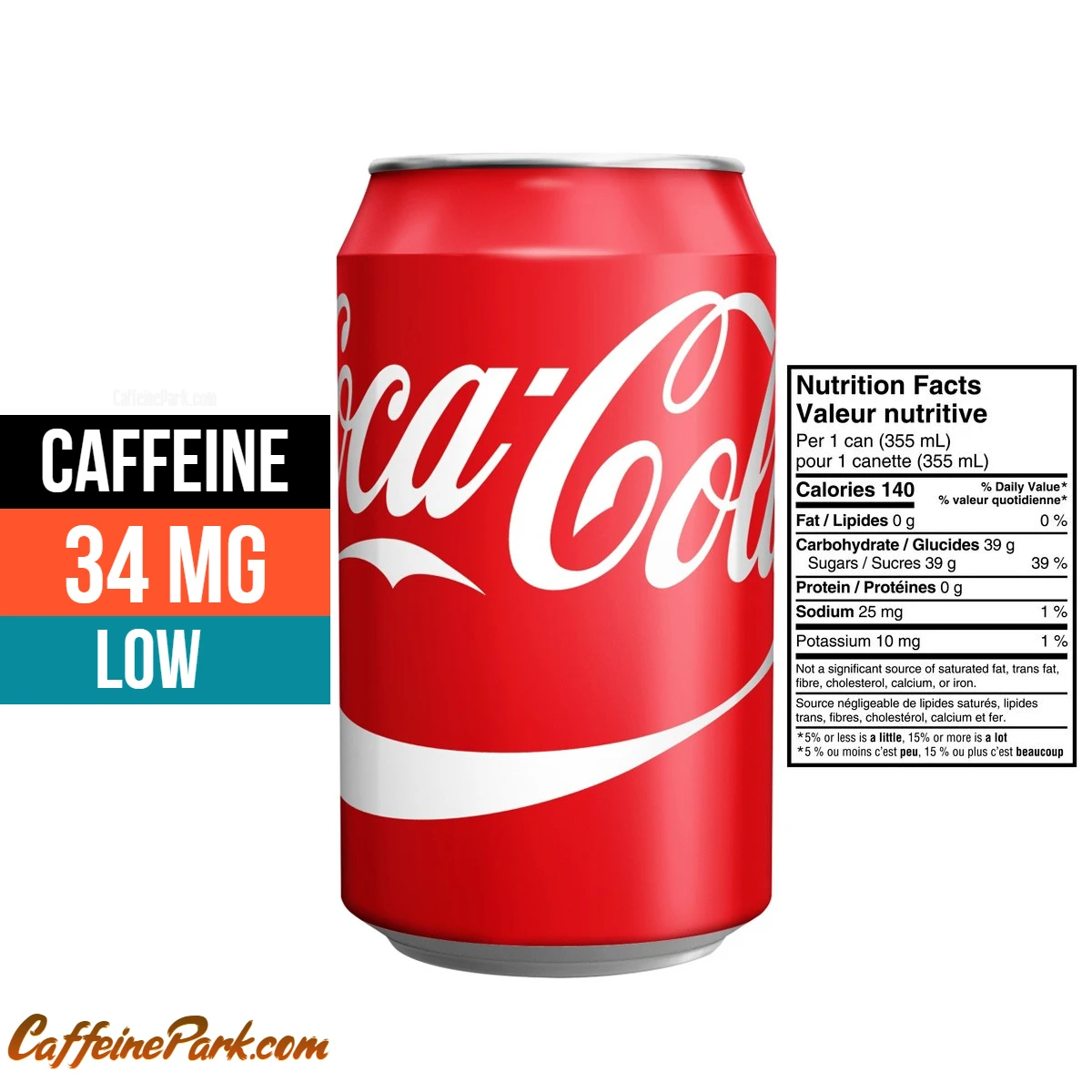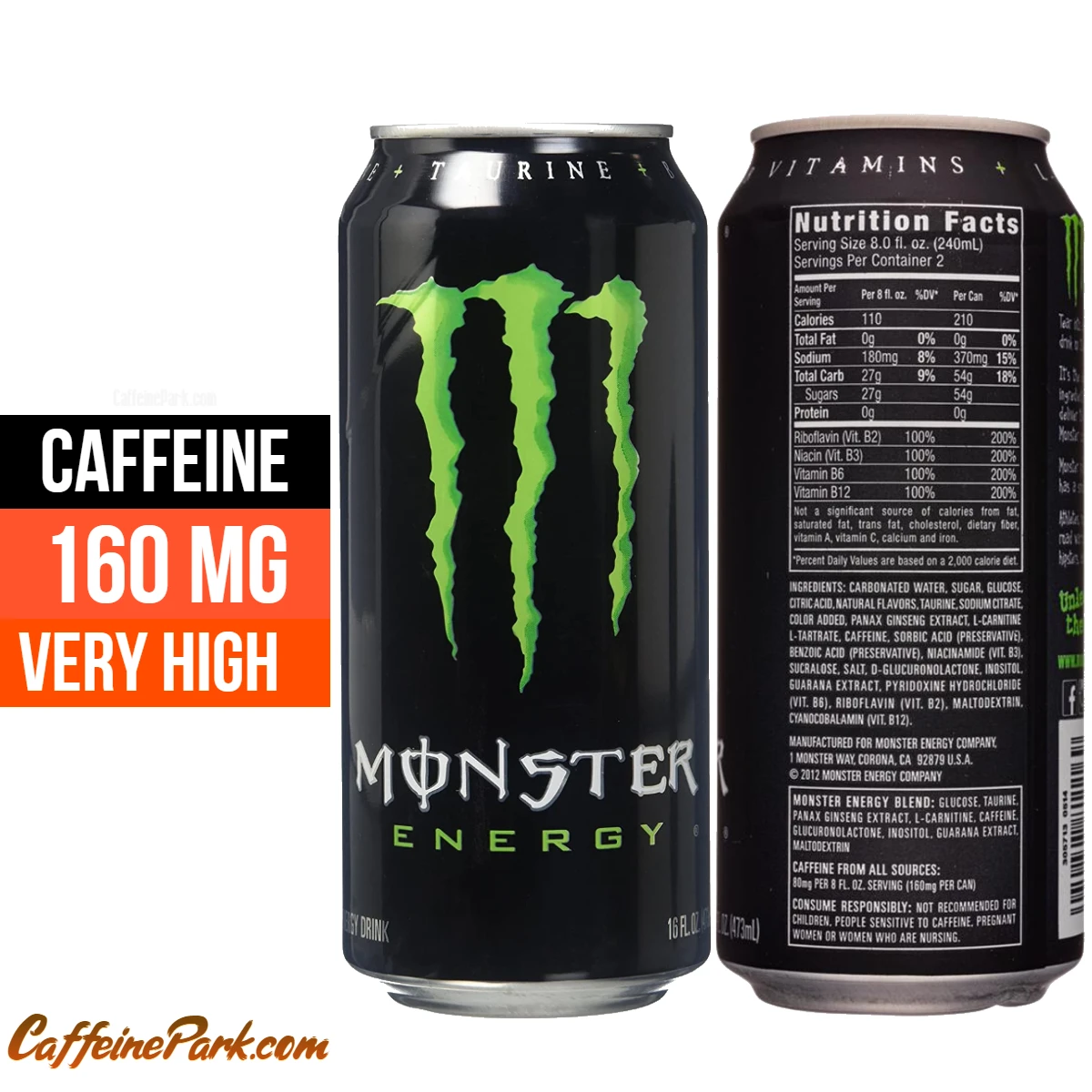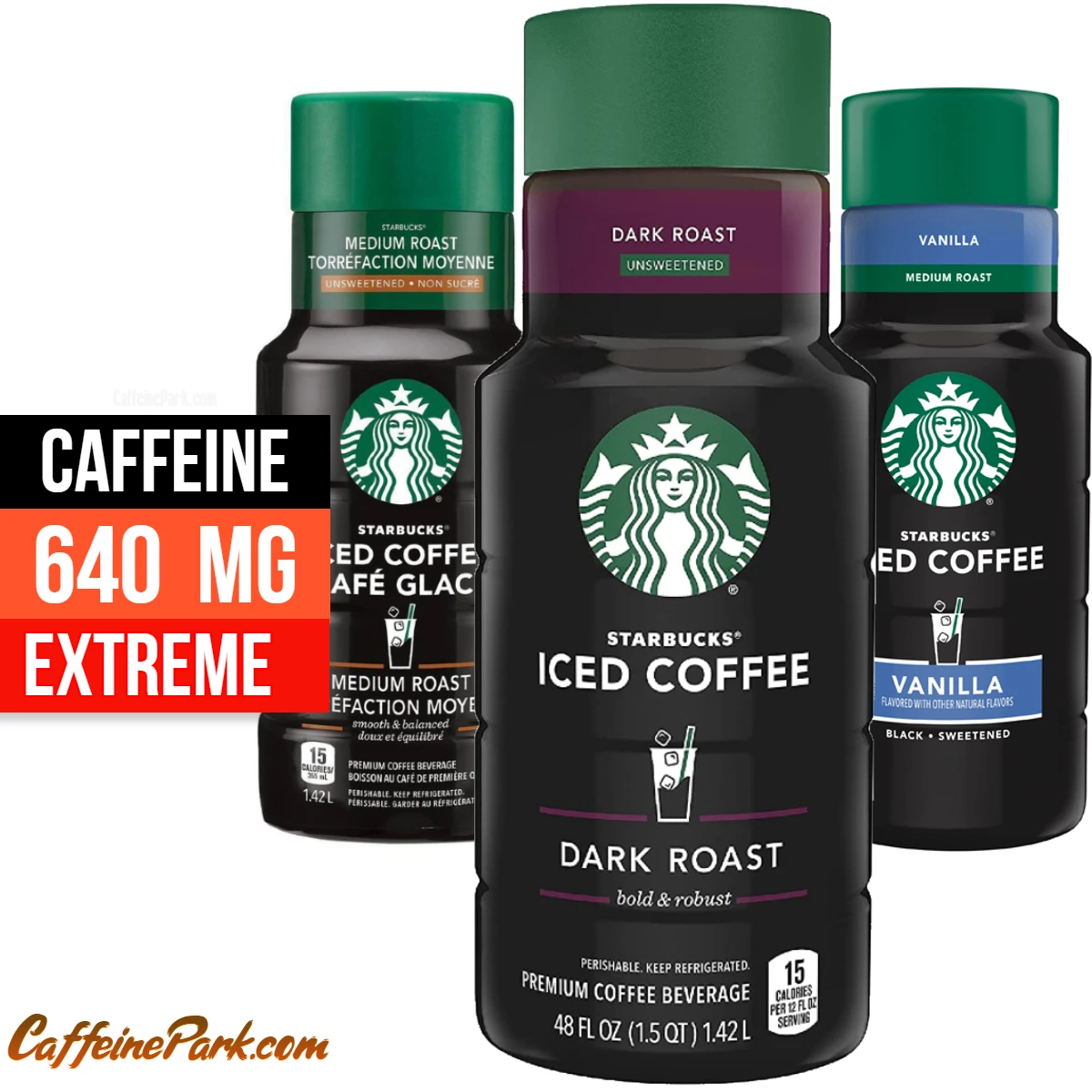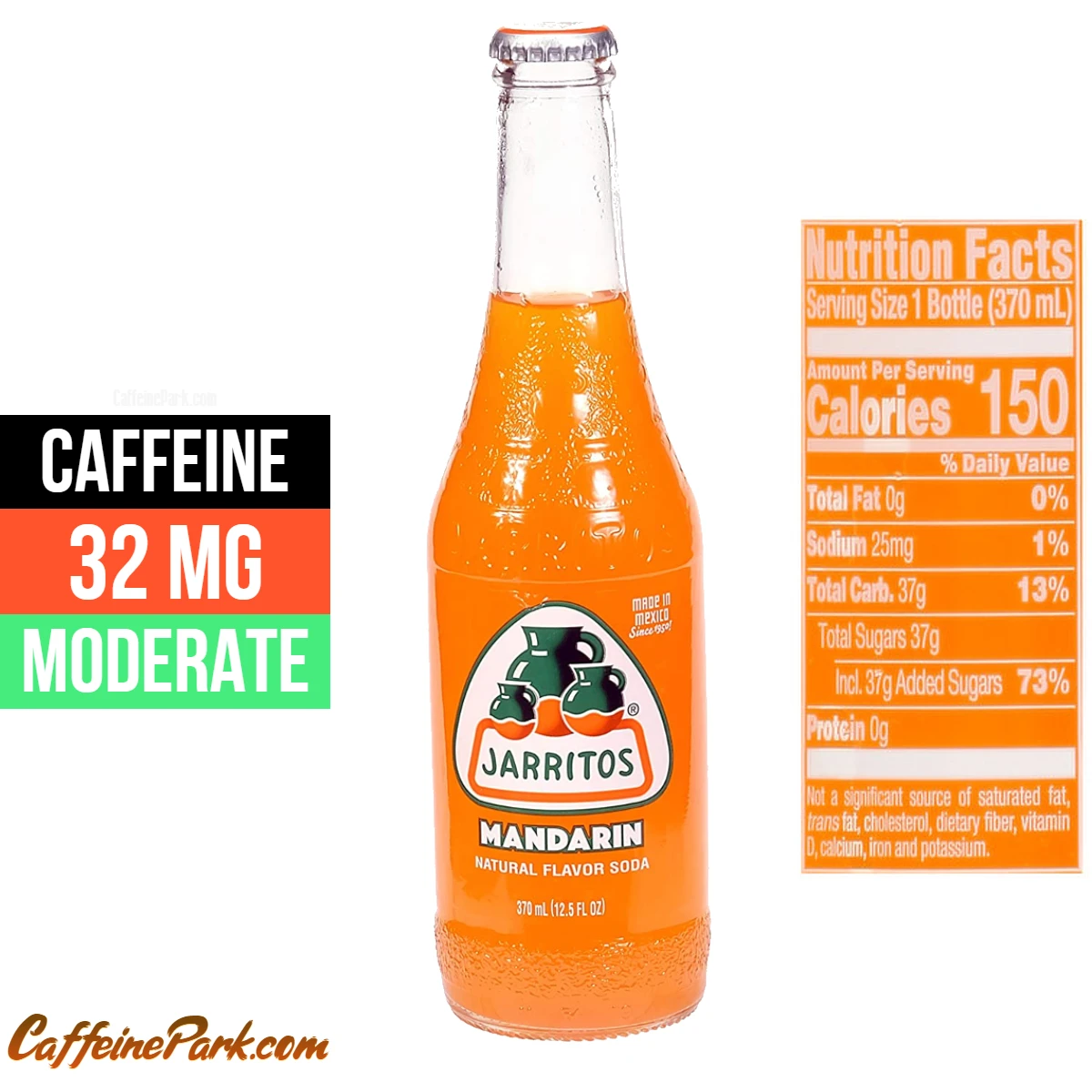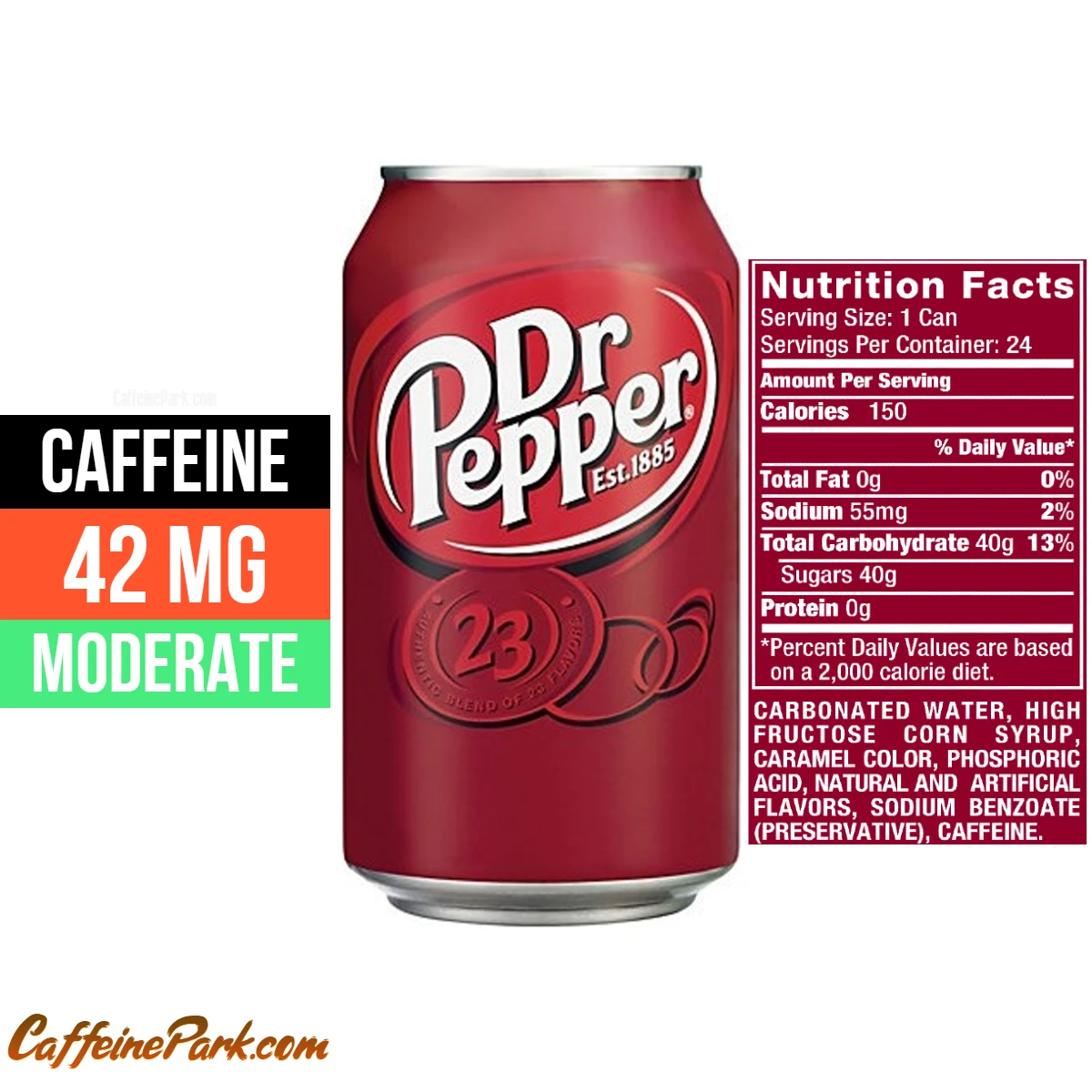
Dr Pepper is a carbonated soft drink that was first created in 1885 by Charles Alderton in Waco, Texas. It is a unique blend of 23 flavors and is often described as having a “pepper” or spicy taste. The caffeine content in Dr. Pepper varies depending on the size of the serving, but on average, A 12 fluid ounce (fl oz) can of Dr. Pepper contains 41 milligrams (mg) of caffeine.
This amount of caffeine is considered moderate and is roughly equal to the amount found in a cup of coffee. However, it is important to note that the recommended daily limit for caffeine intake is 400 milligrams, so it is important to consume Dr. Pepper in moderation and keep track of your overall caffeine intake from other sources.
Does Dr. Pepper have caffeine?
Yes, Dr. Pepper contains 41mg of caffeine per 12 fl oz can and 3.5mg of caffeine per fl oz (11.83mg per 100ml).
| Serving size | Caffeine Amount | Calories | Caffeine strength |
|---|---|---|---|
| 100ml | 11.8 mg | 42.3 | LOW |
| 8.45 fl oz (250ml) | 29.6 mg | 105.6 | LOW |
| 12 fl oz can | 41 mg | 150 | MODERATE |
| 16 fl oz can | 56 mg | 200 | MODERATE |
- Caffeine Amount: 41 mg
- Caffeine strength: MODERATE
- Calories: 150
- Serving size: 12 fl oz can
- Sugar: 41g
Ingredients in Dr. Pepper
- Carbonated Water
- High Fructose Corn Syrup
- Caramel Color
- Phosphoric Acid
- Natural And Artificial Flavors
- Sodium Benzoate (preservative)
- Caffeine
Compare caffeine in Dr. Pepper vs. other Soda
| Soft Drinks | Serving Size | Caffeine |
|---|---|---|
| Dr Pepper | 12 fl oz | 41mg |
| Coke | 12 fl oz | 34mg |
| Mountain Dew | 12 fl oz | 54mg |
| Pepsi | 12 fl oz | 38mg |
| Shasta Cola | 12 fl oz | 43mg |
| Sprite | 12 fl oz | 0mg |
| Fanta | 12 fl oz | 0mg |
Caffeine in Flavors of Dr Pepper
- Regular Dr Pepper: 41 mg caffeine per 12 fl oz
- Diet Dr Pepper: 41 mg caffeine per 12 fl oz
- Dr Pepper Regular Cherry Vanilla: 39 mg per 12 fl oz
- Dr Pepper Diet Cherry Vanilla: 39 mg per 12 fl oz
- Dr Pepper Cherry: 39 mg per 12 fl oz
- Diet Dr Pepper Cherry: 39 mg per 12 fl oz
- Dr Pepper Caffeine-Free Regular: 0 mg
- Dr Pepper Caffeine-Free Diet: 0 mg
Caffeine in Dr. Pepper compared to Coke?
The amount of caffeine in a serving of Dr. Pepper and a serving of Coca-Cola is generally similar, but there may be slight variations depending on the specific product and the size of the serving. A typical serving of Dr. Pepper (12 fl oz) contains about 41 mg of caffeine, while a typical serving of Coca-Cola (12 fl oz) contains about 34 mg of caffeine. These values are approximate and the actual caffeine content of a specific product may vary.
It’s worth noting that the daily recommended limit for caffeine intake is 400 mg for adults, according to the Mayo Clinic. It’s important to monitor your caffeine intake to ensure that you’re not consuming too much, as excessive caffeine consumption can lead to unwanted side effects such as difficulty sleeping, irritability, and an increased heart rate.
Review
Dr. Pepper is a carbonated soft drink that was created in the 1880s by Charles Alderton, a pharmacist in Waco, Texas. The drink was named after Dr. Charles T. Pepper, a physician and friend of Alderton’s who was a frequent customer at the pharmacy where Alderton worked.
History
Dr. Pepper is a carbonated soft drink that was first created in the 1880s by pharmacist Charles Alderton in Waco, Texas. Alderton developed the drink as a unique blend of 23 flavors, including cherry, vanilla, and caramel, and initially sold it at his soda fountain in the Morrison’s Old Corner Drug Store. The drink quickly gained popularity and was eventually bottled and distributed nationally.
In the early 1900s, Dr. Pepper was sold in syrup form to soda fountains, and customers would add carbonated water to the syrup to create their own Dr. Pepper drinks. In the 1920s, the first bottled and canned versions of Dr. Pepper were introduced, making the drink more widely available to consumers. In the following decades, Dr. Pepper continued to grow in popularity, and it is now sold in more than 50 countries around the world.
Taste and flavor
Dr. Pepper is known for its unique and distinct taste. The flavor profile is a combination of 23 different flavors, which makes it hard to pin down exactly what it tastes like. Some people describe it as having a “pepper” or spicy taste, while others say it has a sweet, fruity flavor. Some of the ingredients that contribute to the flavor include caramel, cherry, and a blend of other fruits and spices.
Many people find the taste of Dr Pepper to be quite enjoyable and it has developed a loyal following over the years. The drink has a carbonated texture, which can be described as a fizzy and bubbly sensation. The sweet and spicy taste of the drink can be enjoyed on its own or as a mixer in cocktails.
It’s worth noting that Dr. Pepper’s taste and flavor are different from other soda drinks and it’s not a direct comparison with cola or root beer and that’s why it is considered to be a unique and one-of-a-kind drink.
In summary, Dr. Pepper is known for its unique and distinct taste that is a combination of 23 flavors. It is often described as having a “pepper” or spicy taste, with sweetness and carbonated texture. Many people enjoy the taste of Dr. Pepper and it has developed a loyal following over the years.
Price
The cost of Dr. Pepper can vary depending on where you purchase it. In supermarkets and convenience stores, it is usually sold in 12-pack cans or 20-ounce bottles, with prices ranging from around $3 to $5. On-tap versions of Dr. Pepper are also available at some restaurants and fast food chains, and these tend to cost slightly more due to the added convenience of being able to purchase the drink in larger quantities.
Packaging of Dr. Pepper
One of the most notable features of Dr. Pepper is its packaging, which features a red and white color scheme with a vintage-style label featuring the iconic “Dr. Pepper” logo. The drink is available in a variety of sizes, including cans, bottles, and on-tap, making it easy to find a format that suits your needs.
Ingredients
As mentioned earlier, the exact recipe for Dr. Pepper is a closely guarded secret, but it is known to contain a blend of 23 flavors. The ingredients listed on a can of Dr. Pepper include carbonated water, high fructose corn syrup, caramel color, phosphoric acid, natural and artificial flavors, and sodium benzoate (a preservative).
Nutritional Information
Here is the nutritional information for a 12-ounce serving of regular Dr. Pepper:
- Calories: 150
- Total Fat: 0g
- Sodium: 45mg
- Total Carbohydrates: 41g
- Sugars: 41g
- Protein: 0g
It is important to note that Dr. Pepper is not a significant source of nutrients and is high in added sugars. Consuming sugary drinks like Dr. Pepper can contribute to weight gain and increased risk of chronic diseases such as obesity, type 2 diabetes, and tooth decay. It is recommended to limit your intake of sugary drinks and to consume a diet that is rich in whole, unprocessed foods to ensure an adequate intake of essential nutrients.
Dr. Pepper also offers a diet version of its drink, called Diet Dr. Pepper, which is sweetened with artificial sweeteners and has fewer calories. This version of the drink contains about 10 calories and 3 grams of carbohydrates per 12-ounce serving, making it a lower-calorie alternative for those looking to reduce their sugar intake. However, it is worth noting that diet drinks may not necessarily be a healthier option, as some research has suggested that artificial sweeteners may have negative effects on health when consumed in large amounts. As with any food or drink, it is important to consume a variety of nutrients and to pay attention to portion sizes and frequency of consumption.
Comparison to others
Dr Pepper is often compared to other carbonated soft drinks, such as Coca-Cola and Pepsi. While all three drinks are colas, they have distinct differences in terms of taste and ingredients.
Coca-Cola is known for its classic, iconic taste which is described as a balance of sweetness and acidity. The recipe for Coca-Cola is a closely guarded secret, but it is known to contain caramel, vanilla, and a blend of natural flavors.
Pepsi, on the other hand, is known for its sweeter taste and is often described as having a slightly more syrupy taste compared to Coca-Cola. It also contains a blend of natural flavors and sweeteners.
When comparing Dr Pepper to Coca-Cola and Pepsi, it’s often said to have a spicier or more complex taste profile. It’s a unique blend of 23 flavors and has a different taste profile than the other two. Dr Pepper is often described as having a slightly sweeter taste than Coca-Cola, but not as sweet as Pepsi.
In summary, Dr Pepper is often compared to other carbonated soft drinks such as Coca-Cola and Pepsi. While all three are colas, they have distinct differences in taste and ingredients. Coca-Cola is known for its classic, iconic taste, Pepsi for its sweeter taste and Dr Pepper for its unique blend of 23 flavors, making it a different taste experience than the other two.
Uses for Dr. Pepper
In addition to being enjoyed on its own as a soft drink, Dr. Pepper can also be used in a variety of recipes and cocktails. Some popular uses for Dr. Pepper include:
- BBQ Sauce: Mix Dr. Pepper with tomato sauce, vinegar, and a blend of spices to create a sweet and tangy BBQ sauce.
- Baked Beans: Add Dr. Pepper to a pot of baked beans for a unique flavor twist.
- Glaze: Mix Dr. Pepper with brown sugar and butter to create a glaze for ham or pork chops.
- Cake: Use Dr. Pepper as the liquid in a cake recipe for a moist and flavorful cake.
- Chicken: Marinate chicken in a mixture of Dr. Pepper and your favorite BBQ sauce for a sweet and tangy flavor. Grill or bake the chicken until it is cooked through.
- Brownies: Add a small amount of Dr. Pepper to the batter of your favorite brownie recipe for a moist and fudgy texture.
- Ice Cream Float: Make a classic ice cream float by adding a scoop of vanilla ice cream to a glass of cold Dr. Pepper.
- Cocktails: Use Dr. Pepper as a mixer in cocktails for a unique and refreshing flavor. Try mixing it with vodka and lime juice for a “Dr. Pepper Moscow Mule,” or with bourbon and lemon juice for a “Dr. Bourbon.”
Marketing and Advertising for Dr. Pepper
Dr. Pepper has been marketed and advertised through various mediums over the years, including television, radio, and print ads. One of the earliest marketing campaigns for Dr. Pepper was the “Drink a Bite to Eat at 10, 2, and 4” campaign, which encouraged people to drink Dr. Pepper as a pick-me-up between meals.
In the 1960s, Dr. Pepper introduced the slogan “I’m a Pepper, he’s a Pepper, she’s a Pepper, we’re a Pepper, wouldn’t you like to be a Pepper too?” This slogan was used in a variety of advertisements, including television commercials featuring actors dressed as doctors and the character of “Dr. Pepper,” a man with a white lab coat and stethoscope.
In the 1990s, Dr. Pepper launched the “Be a Pepper” campaign, which featured the character of “Darrell,” a lovable outcast who becomes popular after he starts drinking Dr. Pepper. The campaign was successful and helped to boost sales of the drink.
In recent years, Dr. Pepper has continued to advertise through various mediums, including social media, sponsored events, and partnerships with popular franchises such as “Star Wars” and “Marvel.”
Controversies Surrounding Dr. Pepper
Like many other soft drinks, Dr. Pepper has faced criticism for its high sugar content and its potential negative effects on health. Some studies have suggested that the consumption of sugary drinks, including Dr. Pepper, may be linked to an increased risk of obesity, diabetes, and other health problems.
In response to these concerns, Dr. Pepper has introduced lower-calorie and sugar-free versions of the drink, such as Dr. Pepper Zero and Diet Dr. Pepper. These versions are sweetened with artificial sweeteners, such as aspartame, and have fewer calories and less sugar than regular Dr. Pepper.
Dr. Pepper has also faced criticism for its use of high fructose corn syrup as a sweetener. Some studies have suggested that high fructose corn syrup may be more harmful to health than other sweeteners, although the research on this topic is inconclusive. Despite these concerns, Dr. Pepper continues to be a popular choice for many people.
FAQs
The caffeine content of Dr. Pepper is similar to that of other sodas. A 12-ounce can of Dr. Pepper contains 41 milligrams of caffeine, while a 12-ounce can of Coca-Cola contains about 34 milligrams of caffeine and a 12-ounce can of Mountain Dew contains about 54 milligrams.
It is important to note that the caffeine content of soda can vary depending on the brand and the specific product. Some sodas may contain more caffeine than others, and the caffeine content can also vary between different sizes and types of containers. For example, a 2-liter bottle of soda may contain more caffeine than a 12-ounce can.
It is also worth noting that the caffeine content of soda is generally lower than that of other caffeinated beverages, such as coffee and energy drinks. A cup of coffee can contain anywhere from 80 to 100 milligrams of caffeine or more, depending on the type of coffee bean, the roast level, and the brewing method. Energy drinks can also contain high levels of caffeine, with some products containing as much as 300 milligrams or more in a single serving. Overall, the caffeine content of soda is relatively low compared to other caffeinated beverages.
As with any substance, it is important to consume caffeine in moderation. The American Beverage Association recommends that adults consume no more than 400 milligrams of caffeine per day. Excessive caffeine consumption can lead to symptoms such as insomnia, nervousness, restlessness, irritability, an upset stomach, a fast heartbeat, and muscle tremors.
Caffeine can also have potential interactions with certain medications and can increase the risk of side effects. If you are taking medication and are concerned about the potential interaction with caffeine, you should consult with a healthcare professional. It is also worth noting that Dr. Pepper contains other ingredients in addition to caffeine, and some of these ingredients may have an effect on your health. For example, sugary drinks like Dr. Pepper can contribute to weight gain if consumed in excess and may increase the risk of certain health problems, such as type 2 diabetes and tooth decay.
Overall, it is important to consume caffeine in moderation and to be mindful of any potential negative effects. If you have concerns about your caffeine intake or are experiencing negative effects from caffeine, you should consult with a healthcare professional.
Some people may develop a physical dependence on caffeine, which can lead to withdrawal symptoms when they stop consuming it. However, caffeine is not considered to be a highly addictive substance, and most people can easily reduce their caffeine intake or stop consuming it without experiencing significant withdrawal symptoms. Caffeine works by stimulating the central nervous system, and it can produce a feeling of alertness and energy. Some people may develop a tolerance to caffeine over time, which means that they need to consume larger amounts to achieve the same effects. However, this does not necessarily mean that they are addicted to caffeine.
Caffeine addiction is not formally recognized as a diagnosable disorder, and most people who consume caffeine do not experience significant negative consequences from their use. However, it is important to consume caffeine in moderation and to be mindful of any potential negative effects, such as insomnia, nervousness, restlessness, irritability, an upset stomach, a fast heartbeat, and muscle tremors. If you have concerns about your caffeine intake or are experiencing negative effects from caffeine, you should consult with a healthcare professional.
The American Academy of Pediatrics recommends that children and adolescents consume no more than 100 milligrams of caffeine per day. A 12-ounce can of Dr. Pepper contains 41 milligrams of caffeine, which is within the recommended daily limit for children and adolescents. However, it is important to keep in mind that caffeine is just one of many ingredients in Dr. Pepper, and other ingredients may also have an effect on a child’s health. Additionally, it is important for children to maintain a healthy, balanced diet and to consume sugary drinks like Dr. Pepper in moderation.
It is also worth noting that caffeine can have different effects on children than it does on adults. Children may be more sensitive to the effects of caffeine and may experience symptoms such as insomnia, nervousness, restlessness, irritability, an upset stomach, a fast heartbeat, and muscle tremors after consuming caffeine. If your child is experiencing negative effects from caffeine, you should consult with a healthcare professional.
Overall, it is generally safe for children to consume caffeine in moderation, but it is important to monitor their intake and be mindful of any potential negative effects. If you have concerns about your child’s caffeine intake, you should consult with a healthcare professional.
What You Need To Know Before Drinking Another Dr Pepper
Nutrition Facts
1 servings per container
Serving Size240g
- Amount Per ServingCalories150
- % Daily Value *
- Total Fat 0g 0%
- Saturated Fat 0g 0%
- Trans Fat 0g
- Cholesterol 0mg 0%
- Sodium 55mg 3%
- Potassium 0mg 0%
- Total Carbohydrate 40g 14%
- Sugars 40g
- Protein 0g 0%
* The % Daily Value tells you how much a nutrient in a serving of food contributes to a daily diet. 2,000 calories a day is used for general nutrition advice.
Read More:
